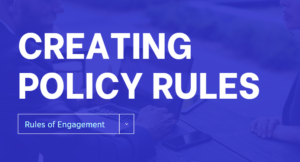
If you have a team of recruiters and talent sourcers, it is crucial to establish a policy outlining the rules of engagement. Without such a policy, there is a high likelihood of duplication of effort, resulting in confusion and inefficiency. The recruitment manager should define the best practices for outreach, including the frequency and timing of contacting leads. Additionally, the policy should specify which team member has complete ownership of a particular candidate at each stage of the recruitment process.
For example, at Amazon, we have a rule policy called “PACE” where we have a 7-day window to make contact with a candidate lead, and all outreach must be tracked within a CRM (Beamery). Failure to follow this guideline risks losing full ownership of the candidate lead.
Working at a company with thousands of recruiters and talent sourcers can be frustrating when it comes to upholding the policies for rules of engagement. On numerous occasions, I have experienced other teams attempting to contact candidates who were already in our recruitment process, some even in the final round of interviews. This creates a negative candidate experience. Therefore, it is crucial to establish a policy that sets clear boundaries and holds recruiters accountable for following the rules.

How to set up an engagement policy?
Recruiting managers can create a rules of engagement policy for candidate ownership by following these steps:
Define the recruitment process: Establish a clear recruitment process that outlines each stage of the process, from identifying potential candidates to hiring them. This process should specify the roles and responsibilities of each team member involved in the process.
Determine candidate ownership: Define which team member has ownership of each candidate at each stage of the recruitment process. This will prevent duplication of effort and ensure that each candidate is handled by a single team member.
Set guidelines for outreach: Establish guidelines for outreach to potential candidates. Specify how often and in what manner team members can contact candidates to avoid overwhelming them with communication.
Establish communication channels: Define the communication channels for team members to use when discussing candidates. This will ensure that everyone is on the same page and avoid confusion.
Train team members: Train all team members on the rules of engagement policy to ensure that they understand their roles and responsibilities.
Monitor compliance: Regularly monitor compliance with the rules of engagement policy to ensure that team members are following the guidelines and that the policy is effective.
Setting up an engagement policy:
When creating an outreach engagement policy document, it’s important to listen to your recruiters and take their feedback into account. They are the ones who are on the front lines of recruitment and have firsthand experience with outreach efforts. Their input can be invaluable in creating a policy that is effective and practical.
Here are some ways you can gather feedback from your recruiters:
Conduct surveys or focus groups: Ask your recruiters to provide feedback on the current outreach policy or on a proposed policy. You can conduct surveys or hold focus groups to gather their opinions and suggestions.
Hold one-on-one meetings: Set up individual meetings with your recruiters to discuss their thoughts and concerns about the outreach policy. This can provide an opportunity for them to share their feedback in a more personal and detailed manner.
Analyze data: Analyze data related to outreach efforts, such as response rates or conversion rates, to gain insight into what is working and what is not. This information can be used to inform the policy and make improvements.
By taking feedback from your recruiters into account, you can create an outreach engagement policy document that is effective and aligns with their needs and experiences. This can improve recruitment efforts and help your team achieve its goals.
Create a third-party review board:
When a recruiter does not follow the rules of engagement, it is crucial to conduct a third-party review of what happened to ensure that the policy is being followed and to identify any areas where improvement is needed. Subject Matter Experts (SMEs) can be helpful in conducting these reviews because they have expertise in recruitment and can provide an objective perspective.
Once the review has been conducted, feedback should be given to the recruiter and their recruitment manager on best practices. This feedback can include:
1. Reinforcing the importance of following the rules of engagement: It’s important to remind recruiters that the rules of engagement are in place to ensure fairness, efficiency, and effectiveness in the recruitment process.
2. Identifying areas for improvement: The review can help identify areas where the recruiter may need to improve their approach, such as refining their outreach strategy or communication with candidates.
3. Providing guidance on best practices: Based on the findings of the review, the recruiter and recruitment manager can be provided with guidance on best practices for following the rules of engagement, such as how to track outreach efforts or how to collaborate effectively with team members.
By conducting a third-party review and providing feedback on best practices, recruiters and their recruitment managers can learn from any mistakes and work to improve their approach in the future. This can help ensure that the rules of engagement are consistently followed and that the recruitment process is fair, efficient, and effective.
- Unlocking the Power of Perplexity AI: Why Recruiters Should Utilize This Revolutionary Tool - February 11, 2024
- Exploring AI Interviewing Assessment Tools: A Comprehensive Review - November 30, 2023
- PartyRock a Sandbox for Talent Sourcing - November 29, 2023
